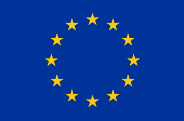
Safe non-food consumer Products in the EU and China
Market surveillance work is undertaken by market surveillance authorities in the individual Member States of the EU. Additional coordination takes place at the EU level to ensure consistency. Whilst market surveillance enforcement is organised differently in each EU Member State, consumer product safety rules are the same and are applied evenly across all Member States.
Action taken in relation to dangerous products can include product withdrawals, recalls and the application of sanctions to stop the circulation of non-compliant, dangerous products.
Market surveillance powers attributed to designated authorities under Regulation (EU) 2019/1020 include at least the following:
(a) the power to require economic operators to provide relevant documents, technical specifications, data or information on compliance and technical aspects of the product, including access to embedded software in so far as such access is necessary for the purpose of assessing the product’s compliance with applicable Union harmonisation legislation, in any form or format and irrespective of the medium of storage or the place where such documents, technical specifications, data or information are stored, and to take or obtain copies thereof;
(b) the power to require economic operators to provide relevant information on the supply chain, on the details of the distribution network, on quantities of products on the market and on other product models that have the same technical characteristics as the product in question, where relevant for compliance with the applicable requirements under Union harmonisation legislation;
(c) the power to require economic operators to provide relevant information required for the purpose of ascertaining the ownership of websites, where the information in question is related to the subject matter of the investigation;
(d) the power to carry out unannounced on-site inspections and physical checks of products;
(e) the power to enter any premises, land or means of transport that the economic operator in question uses for purposes related to the economic operator’s trade, business, craft or profession, in order to identify non-compliance and to obtain evidence;
(f) the power to start investigations on market surveillance authorities’ own initiative in order to identify non-compliances and bring them to an end;
(g) the power to require economic operators to take appropriate action to bring an instance of non-compliance to an end or to eliminate the risk;
(h) the power to take appropriate measures where an economic operator fails to take appropriate corrective action or where the non-compliance or the risk persists, including the power to prohibit or restrict the making available of a product on the market or to order that the product is withdrawn or recalled;
(i) the power to impose penalties in accordance with Article 41;
(j) the power to acquire product samples, including under a cover identity, to inspect those samples and to reverse-engineer them in order to identify non-compliance and to obtain evidence;
(k) the power, where no other effective means are available to eliminate a serious risk:
(i) to require the removal of content referring to the related products from an online interface or to require the explicit display of a warning to end users when they access an online interface; or
(ii) where a request according to point (i) has not been complied with, to require information society service providers to restrict access to the online interface, including by requesting a relevant third party to implement such measures.
Consistency across EU Member States
A substantial amount of work takes place to ensure consistency between the market surveillance authorities in the Member States. The European Commission plays a key co-ordination role with this work including:
Information is available on the successful coordination actions undertaken in the EU.
It is important that manufacturers and other economic operators in the supply chain all have responsibility for ensuring products are safe. When economic operators do not comply with their obligations, it is key that market surveillance authorities are entitled, and will take action in removing dangerous goods from the market.
Learn more about market surveillance for products
Learn more about coordinated actions
Learn more about the Consumer Protection Cooperation Network
Learn more about safety issues on Safety Gate: the EU rapid alert system for dangerous non-food products
You can learn more about this subject in the case studies section.

This website was created and maintained with the financial support of the European Union. Its contents are the sole responsibility of SPEAC project and do not necessarily reflect the views of the European Union.